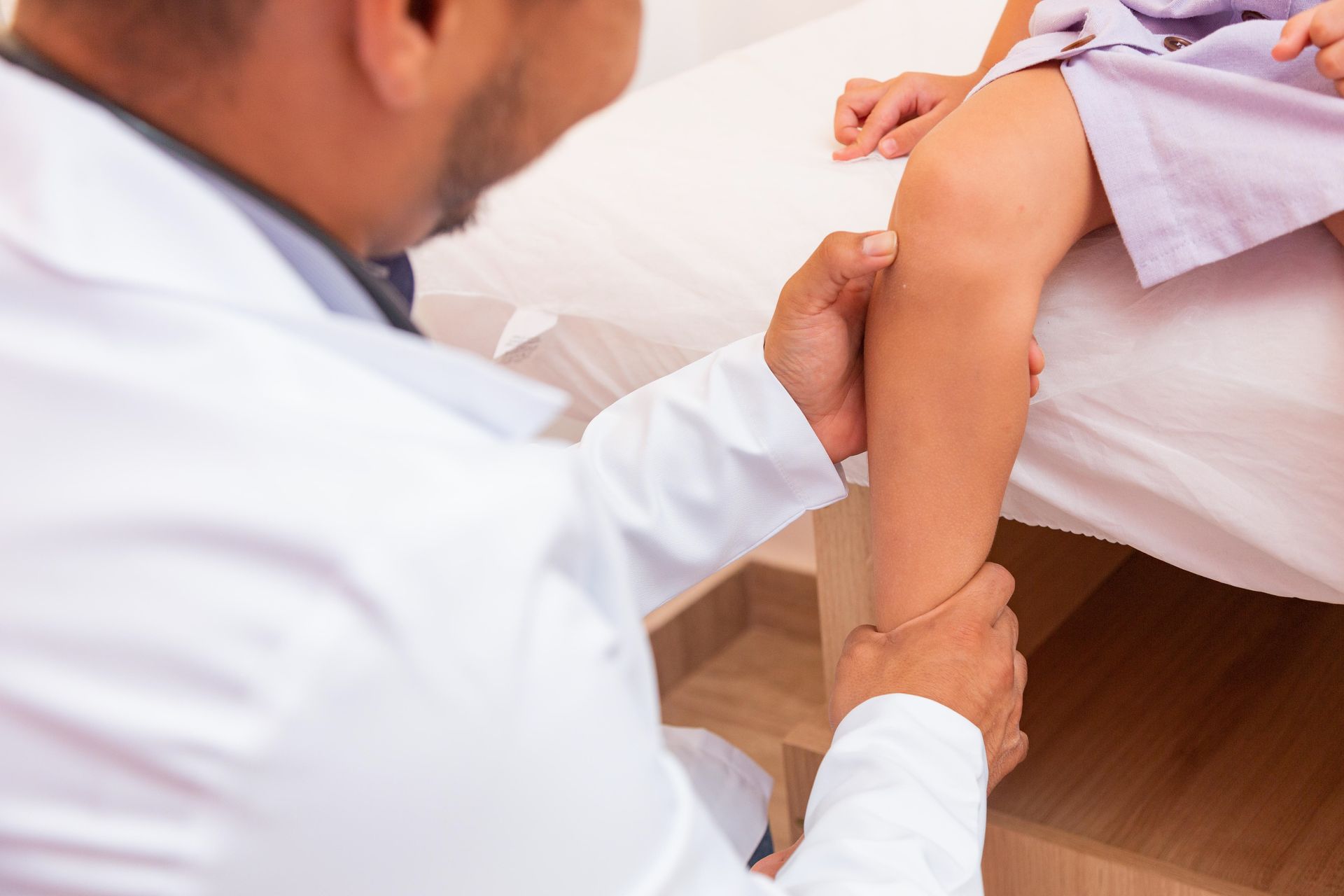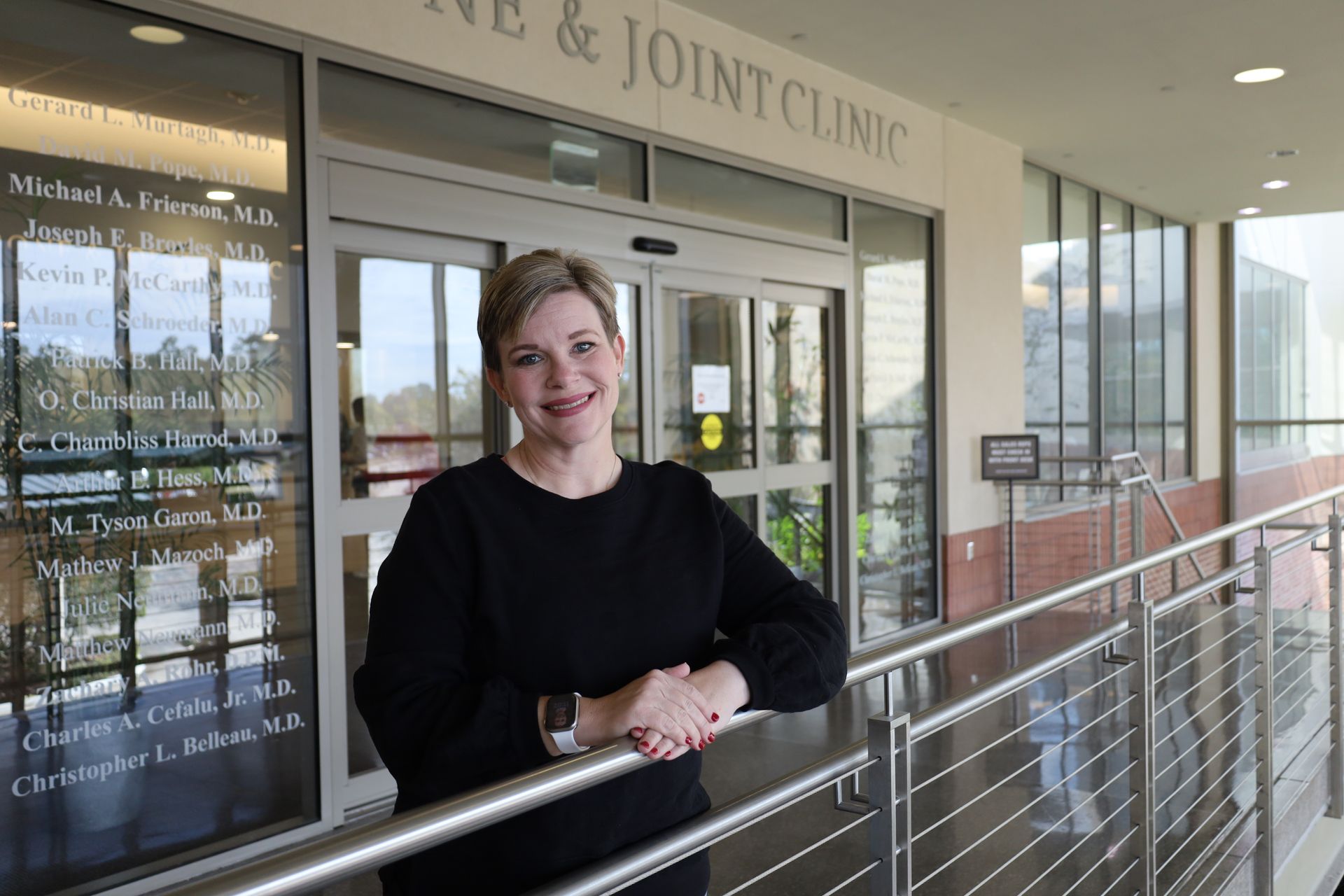Pediatric Fracture Treatment in Baton Rouge
RELATED PAGES
Pediatric Broken Bones Overview
Broken bones or fractures in children are common, occurring in as many as 40 percent of adolescent girls and 50 percent of boys. Most often the result of trauma such as a fall, these breaks vary in type and severity, factors which will play important roles in determining treatment and recovery.
Causes of Broken Bones in Children
Children's bones are softer than those of an adult and still in the process of growth. This makes them more susceptible to fracture. Fortunately, it also means that they are able to heal much faster. Breaks in children are typically the result of excessive force to the bone. This may be from a fall, trauma such as a car accident, or sports-related injury.
Symptoms of Broken Bones in Children
The break or fracture of a bone is going to cause some level of discomfort. However, just how much pain it may cause depends on factors such as severity and location. Not all broken bones present in the same ways. Here are some signs to watch for:
- Pain (particularly when pressure is placed at the site)
- Swelling
- Redness, warmth or bruising
- Loss of mobility in the affected area
- Snapping or popping sound at the time of injury
- Visible deformity
Types of Pediatric Fractures
A bone may be broken entirely or partially, in one place or in multiple, by twisting or by force. There are many distinguishing characteristics of bone fractures, and each of these characteristics are used to classify the type of break into one of the following categories:
- Greenstick - Among the most common types of childhood fractures, greenstick fractures are those where the bone bends but only breaks on one side.
- Torus/Buckle - The bone is bent and weakened but not broken.
- Avulsion - A small piece of bone is disconnected by a tendon or ligament.
- Growth Plate - A fracture that occurs in the growth plate, or cartilage, at the end of growing bones. Approximately 15 to 30 percent of all childhood fractures affect growth plates. These require careful monitoring to ensure the bone fully heals and continues to grow without complication.
- Stress - A very small crack in the bone.
- Comminuted - A fracture of the bone into three or more pieces.
Diagnosing Broken Bones in Children
In order to diagnose bone fractures in children, an orthopedist will conduct a thorough physical examination along with one or more of the following imaging tests:
Treatment Options for Pediatric Fractures
Fractures that occur in childhood must be carefully addressed to ensure they heal fully and the bone continues to grow properly. This means that treatment options must be thoughtfully weighed and selected. Typically, orthopedic physicians will use one or more of the following treatment methodoligies:
- Cast / Splint - Immobilizing the bone in a cast or splint may be necessary to protect the bone and allow it to fuse and heal.
- Traction - Traction uses weight or tension to stretch the soft tissue around a bone to align it properly and promote healing.
- Surgery - In some instances, surgery may be required to mend a broken bone. This may involve placing components such as metal rods or screws to hold the bone in place as it heals.
When are Broken Bones in Children Cause for Concern?
Although a broken bone may be normal in childhood, there are instances where a particular type of fracture or several fractures over a period of time indicates an underlying medical issue. Signs that should give parents concern, include:
- Low-impact Fractures - Although a child's bones may be more susceptible to fractures than an adult's, they should still be able to withstand normal falls and force. When a low amount of impact leads to a fracture, an underlying disorder may be causing weakened and brittle bones.
- Recurrent Fractures - Some children are rougher than others and engage in behavior or types of play that result in more injuries. However, frequent breaks can also be a sign of a bone disorder. A child should be medically evaluated if they have suffered more than two fractures before age 10 or more than three before age 19.
- Fractures of the Femur or Humerus - These bones are the largest and strongest in the body and are not commonly broken. If these bones are fractured outside of a major traumatic event such as a car accident, it should be cause for concern.
- Vertebral Fractures - In the absence of a major injury to the back,
fracture to the vertebrae is a good indicator than an underlying medical condition could be involved.
Pediatric Factures Specialist in Baton Rouge
ARTHUR E. HESS, M.D.
Pediatric & Adult Orthopedic Trauma
Hip, Knee & Shoulder Reconstruction
Hip Preservation
Total Joint Replacement Surgery
Robot-assisted total knee arthroplasty
General Orthopedics
RELATED READING
Pediatric Orthopedic Blogs
MOVE MORE, HURT LESS.
7301 Hennessy Blvd.
Suite 200
Baton Rouge, LA 70808
tel: (225) 766-0050
fax: (225) 766-1499
Bone & Joint Clinic of Baton Rouge, Inc. complies with applicable Federal civil rights laws and does not discriminate on the basis of race, color, national origin, age, disability or sex.
Click to view our notice.
Bone & Joint Clinic of Baton Rouge | All Rights Reserved.




